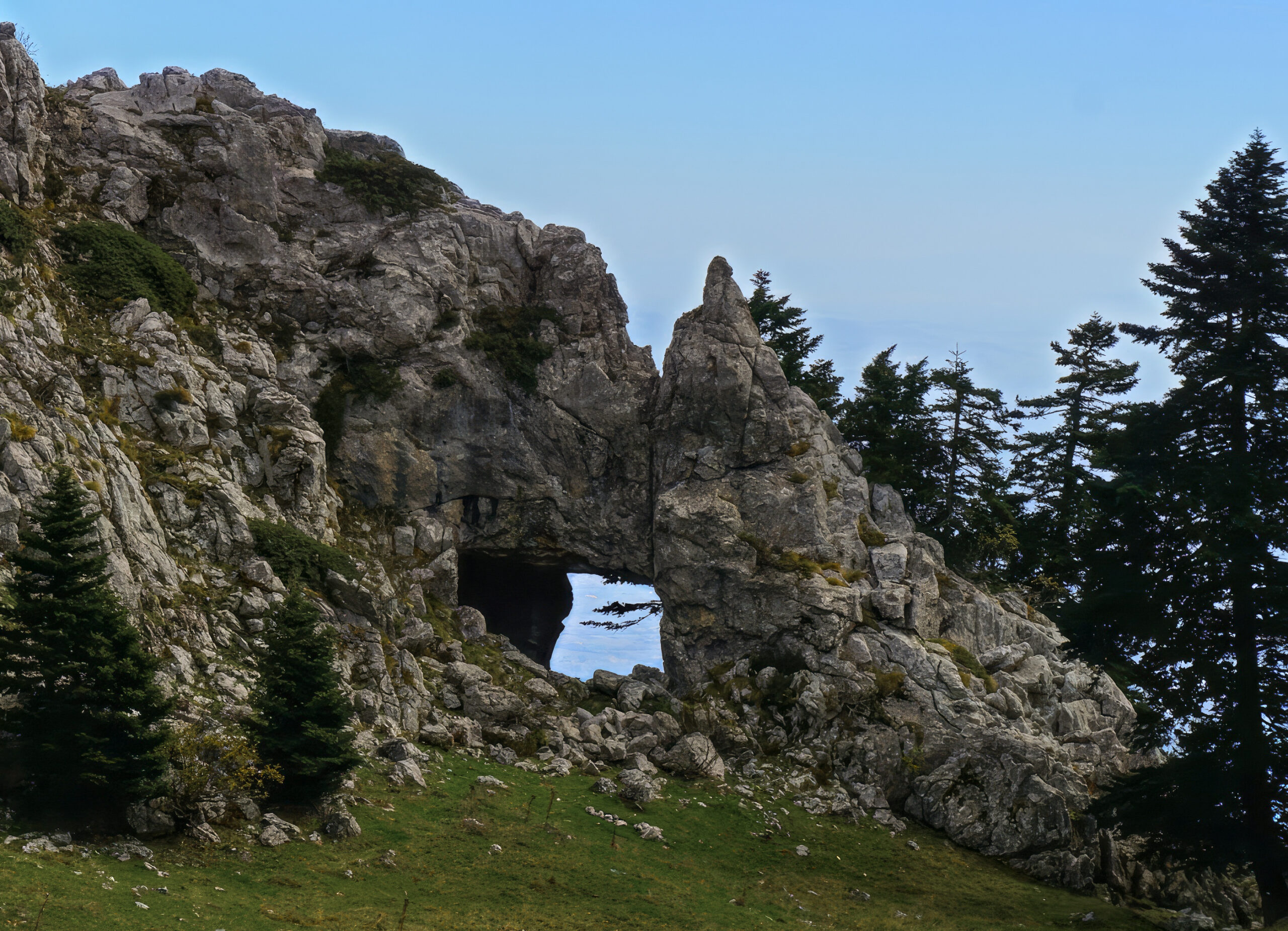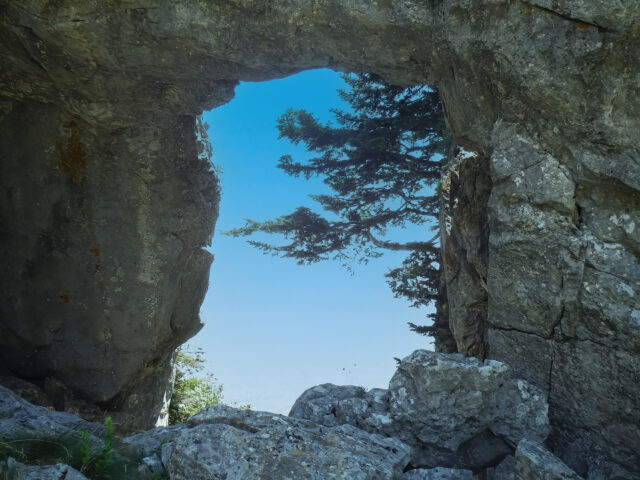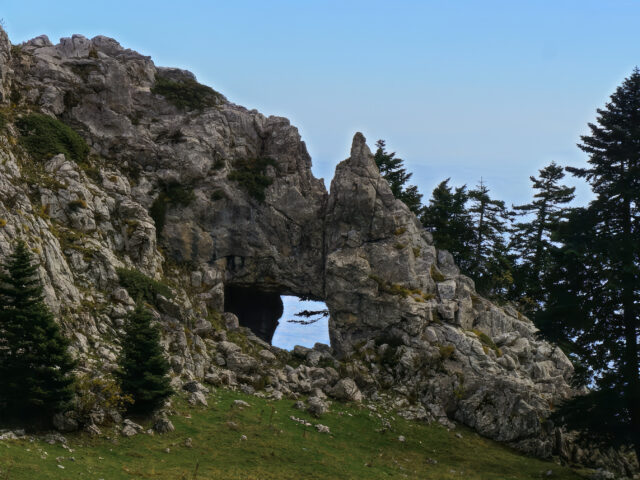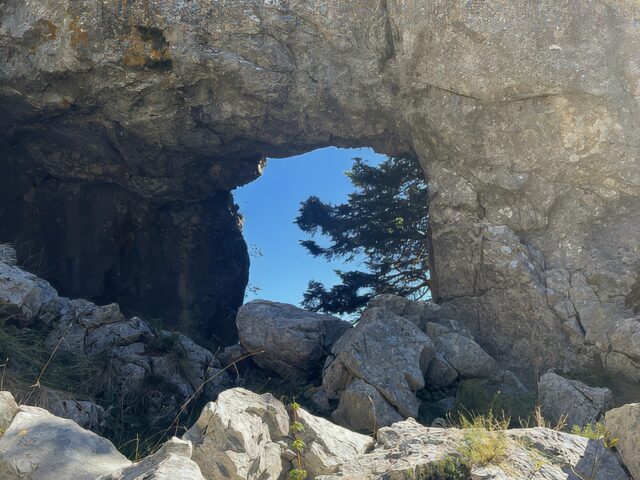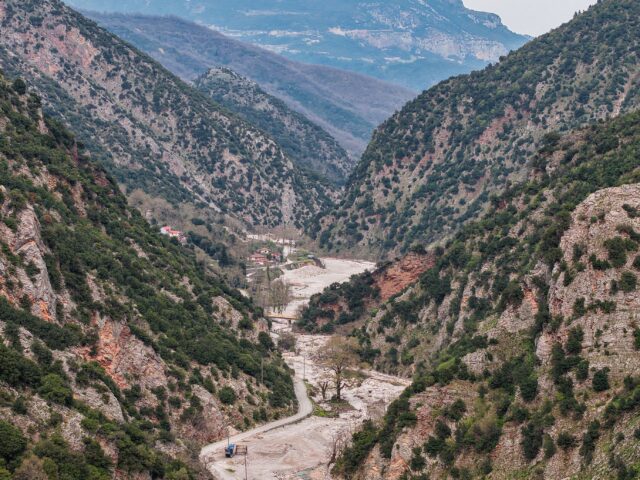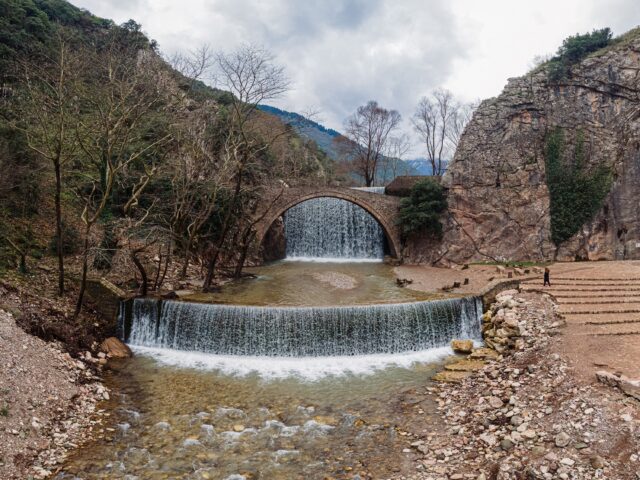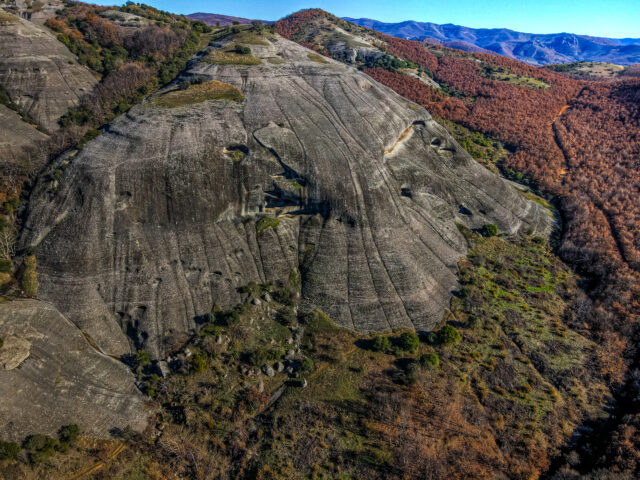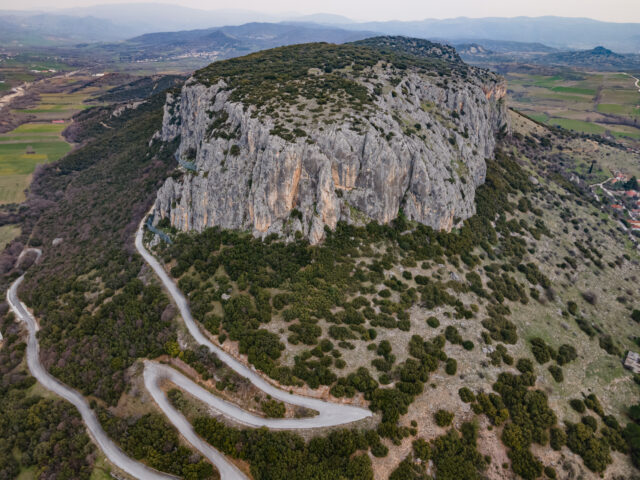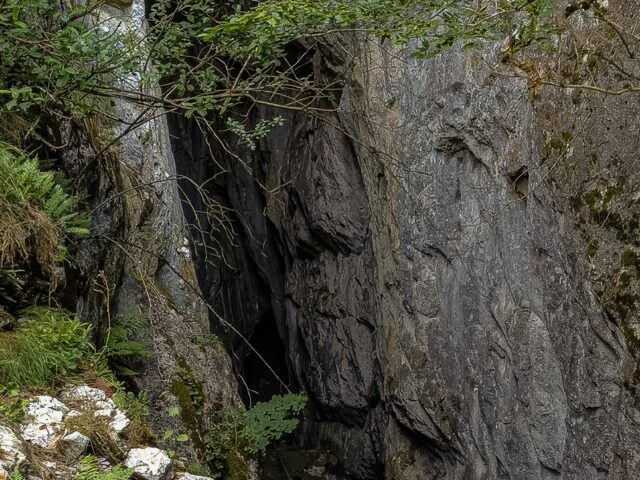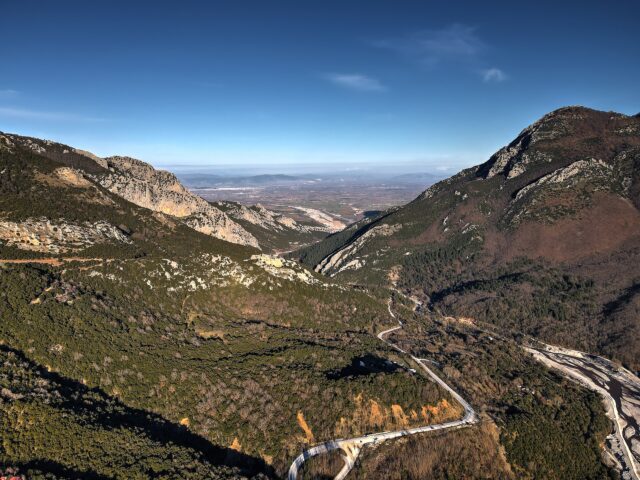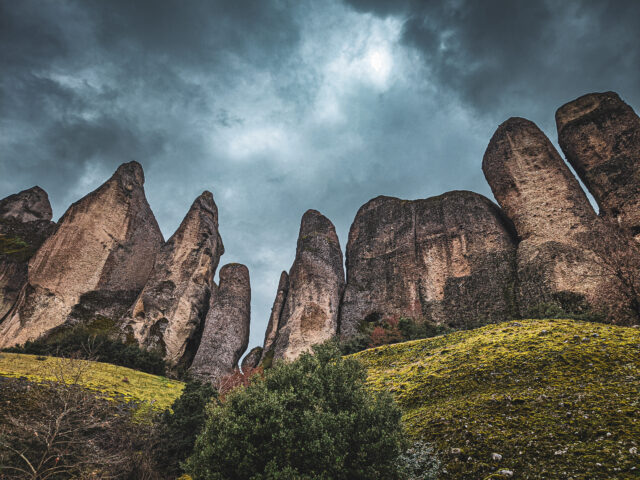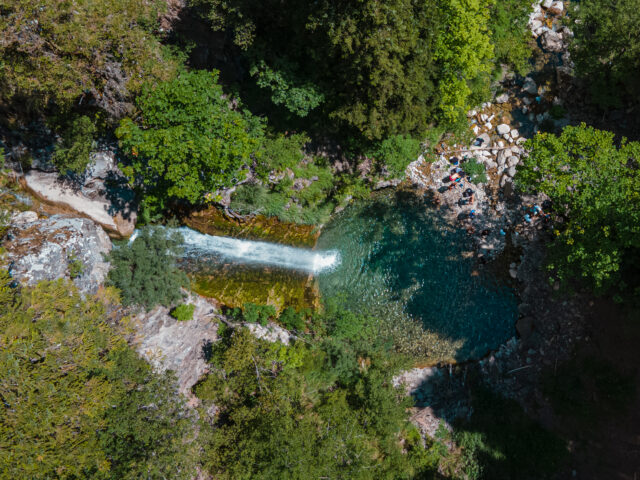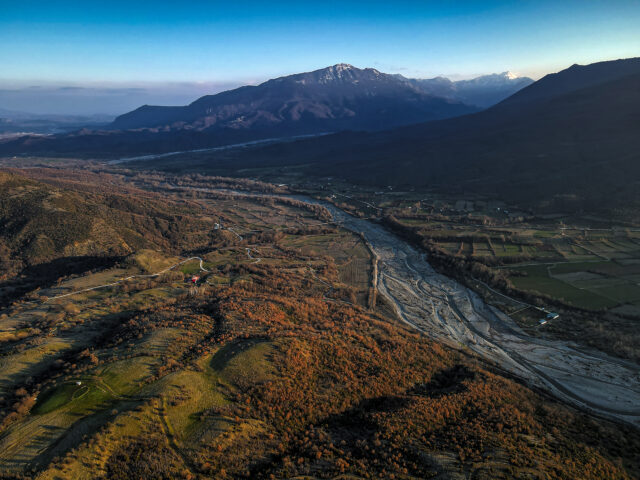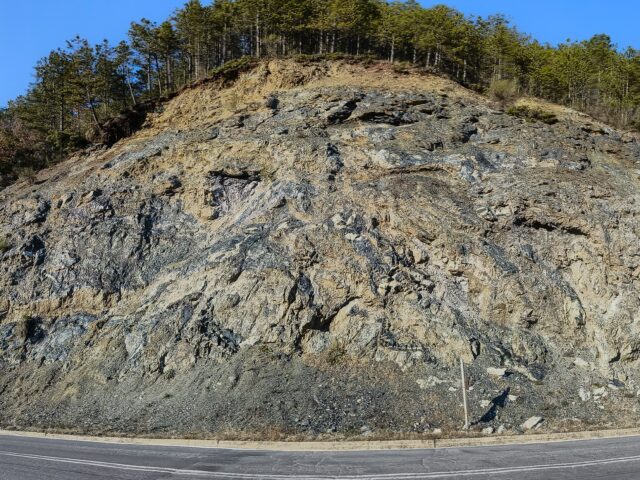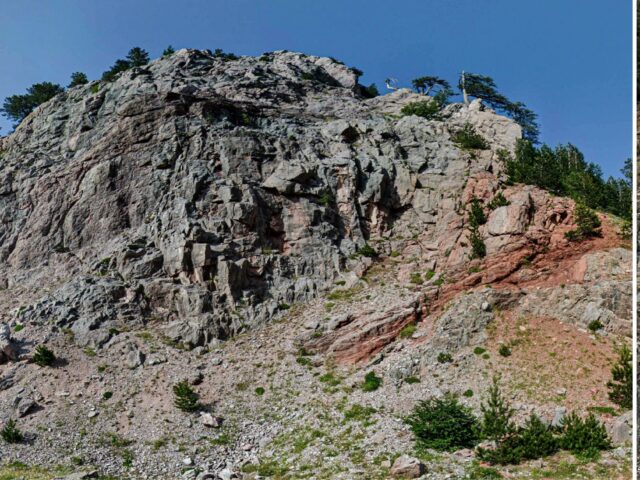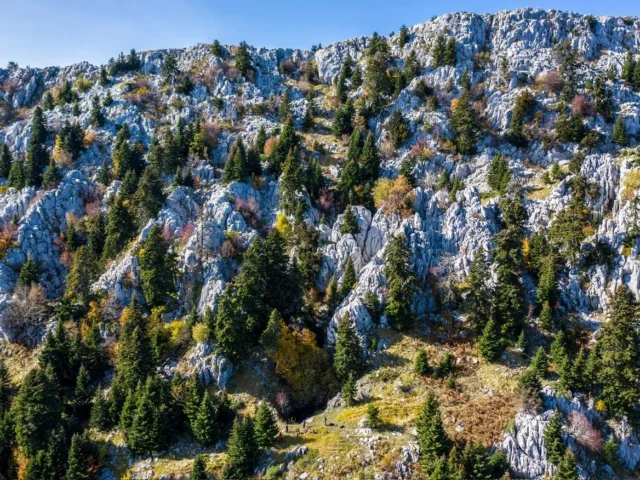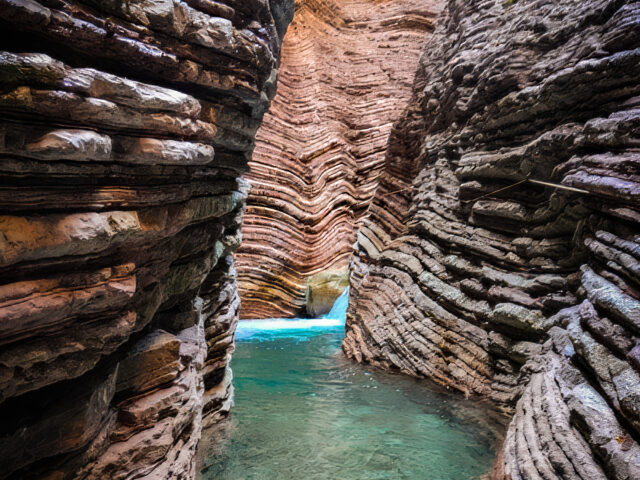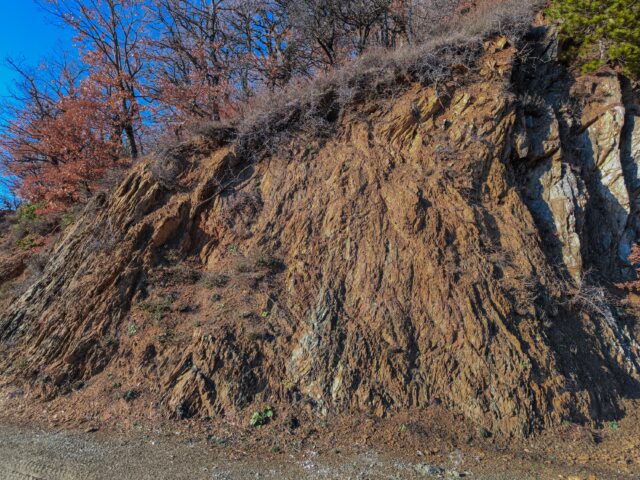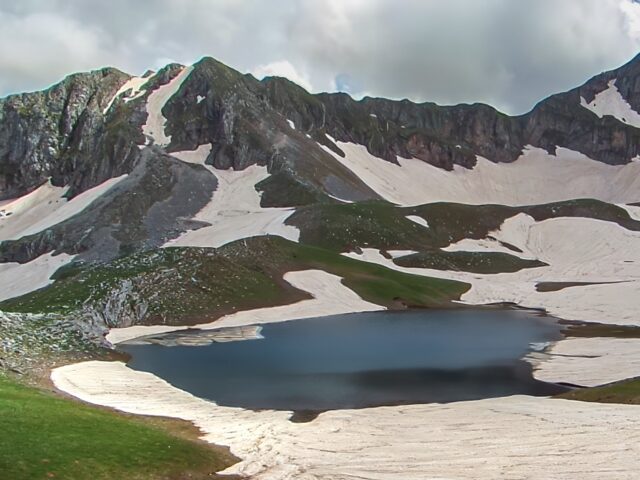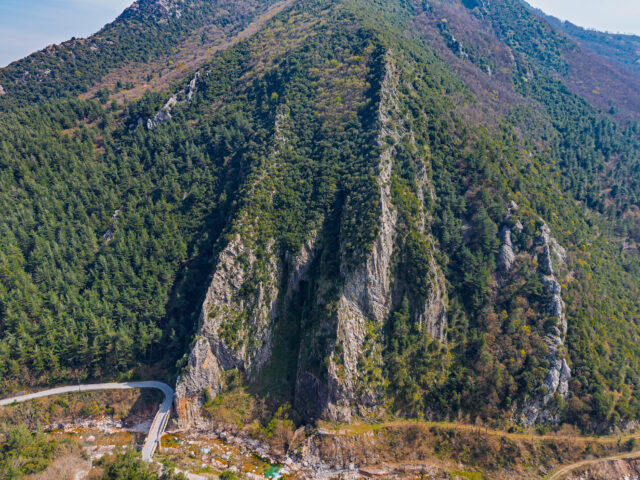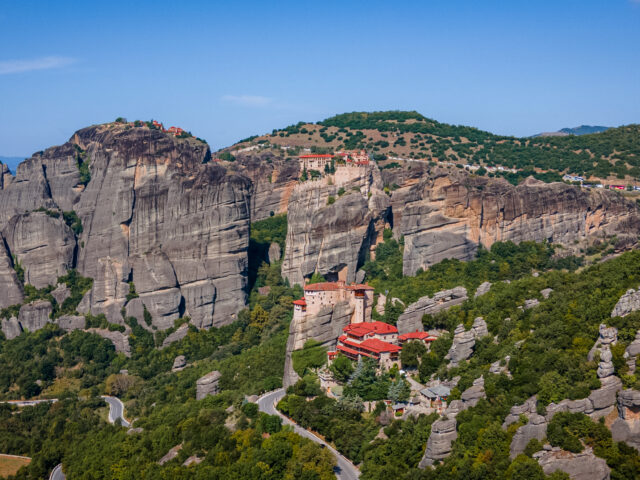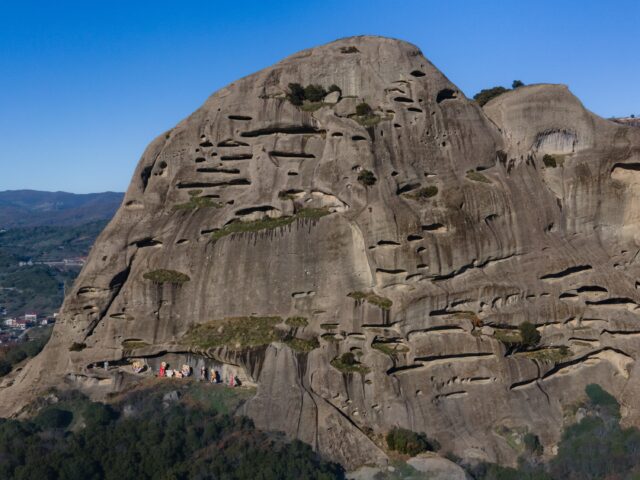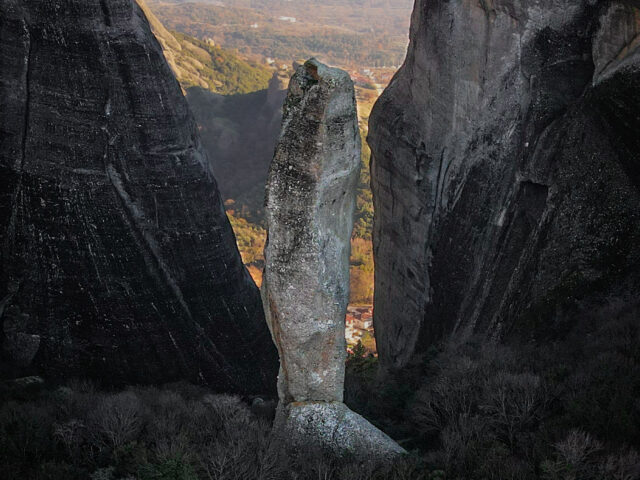Tripio Lithari Arch
Address
Koziakas 421 00
GPS
39.543727734028, 21.542609312433
Trypio Lithari is a natural arch formed by the erosion of limestone rocks on the eastern ridge of Koziakas, at an altitude of 1650 meters, and is one of the mountain’s landmarks. The arch, with an opening of about 10 meters, forms a passage to the western side of the mountain. Several paths and mountaineering routes in the central and southern part of Koziakas lead to Trypio Lithari. Starting points of the routes to Trypio Lithari are Elati, the meadows of Pertouli in the west and Kori in the east. There are also routes that follow the ridge of Koziakas and combine visits to various landmarks. The path, which leads to Trypio Lithari from the village of Kori, passes through a dense oak forest and then through a virgin beech forest. The last part of the route, the most difficult, is in a rocky stream with dense vegetation and fir trees. From the small plateau, just behind the stone arch of Trypio Lithari, the hiking trail begins that leads to Astrapi peak (highest point of Koziakas – 1901 meters) and to the shelter. From Trypio Lithari the route develops into a passable slope with sparse vegetation and, passing south of the peak, ends at the Koziakas shelter. The visitor can combine a visit to Trypio Lithari with routes that offer access to other geotopes of Mount Koziakas (Katavothra Volioti, Spilaio Bei, etc.).
The natural arch is formed in a limestone layer (Jurassic limestones of the Koziakas series) with a vertical arrangement (bedding). The thickness of the limestone decreases due to karst erosion with the passage of geological time. The softer part of the rock erodes, creating depressions, on opposite sides of the formation below the relatively harder part, above it. At the same time, small blocks of limestone lose their cohesion and fall, usually due to expansion of the discontinuities from the expansion of ice in winter, creating larger openings. The depressions erode further, piercing the rock and forming a natural arch. At Trypio Lithari we can observe the characteristic cuboid shape of the discontinuities on the limestone, a structure created by the combination of tectonic ruptures and the limestone bedding. The Koziakas ridge has a peculiar morphology due to the almost vertical layers of rocks, due to the intense folding and presence of faults.

